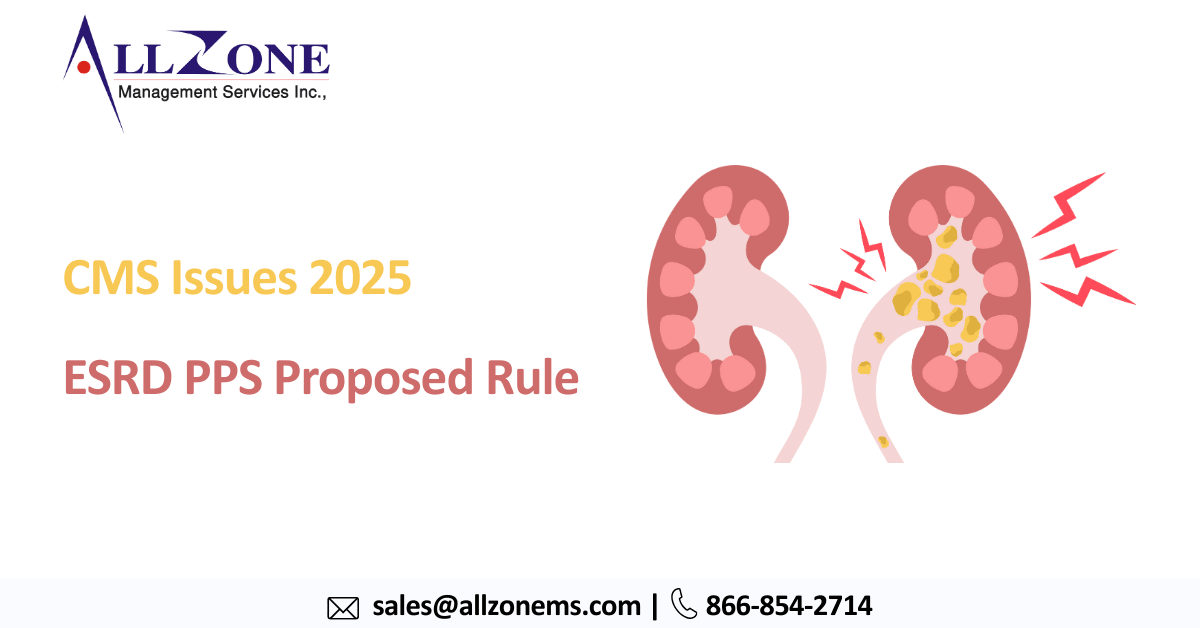ESRD PPS 2025 Update: In the July 5 Federal Register, the Centers for Medicare & Medicaid Services (CMS) will publish a proposed rule for the calendar year (CY) 2025 End-Stage Renal Disease Prospective Payment System (ESRD PPS). A number of changes to Medicare policy and payment rates for ESRD facilities are included in the rule.
Changes to the ESRD PPS:
ESRD PPS base rates for CY 2025 are proposed to increase to $273.20. To calculate this rate, multiply the base rate for CY 2024 ($271.02) by the wage index budget-neutrality adjustment factor (0.990228) and the productivity-adjusted market basket increase of 1.8%.
According to a press release issued on June 28, Kidney Care Partners (KCP) is deeply concerned about the program’s sustainability due to the fact that the market basket does not reflect the actual increase in facilities’ costs. While our members continue to review the proposed rule, KCP remains deeply concerned.
CMS is also proposing the following:
- For the calculation of geographic economic differences, modify the wage index methodology by using the most recent Bureau of Labor Statistics Occupational Employment and Wage Statistics (BLS OEWS) data and the latest occupational mix and treatment volume data available for freestanding ESRD facilities in 2022.
- Drugs and biological products should be subject to a modified outlier payment policy.
- The proposed outlier policy would increase pediatric patients’ fixed dollar losses from $11.32 to $223.44 and decrease adult patients’ fixed dollar losses from $71.76 to $49.46. Pediatric patients would receive a payment increase of $23.36 to $58.39, whereas adult patients would receive a payment decrease of $36.28 to $33.57.
- Provide a $10.18 offset for the transitional add-on payment adjustment for new and innovative equipment and supplies for capital-related assets that are home dialysis machines.
- For Korsuva® and Jesduvroq, update the post-transitional drug add-on payment adjustment amounts.
- Establish a two-tiered low-volume payment adjustment policy (LVPA) providing 28.3 percent upward adjustment for facilities that provide fewer than 3,000 treatments and 18.0 percent for facilities that provide 3,000 to 3,999 treatments. Over three years of cost reporting, the average number of treatments will be used to calculate the annual adjustment.
- ESRD PPS bundled payments will also include oral-only drugs starting on Jan. 1, 2025, according to CMS.
Dialysis Payments and Conditions of Coverage:
In addition to the proposed ESRD PPS base rate, CMS is proposing a $273.20 AKI payment rate update for CY 2025 for ESRD facilities providing dialysis for individuals with acute kidney injury (AKI).
Medicare is also proposing that beneficiaries with AKI can dialyze at home with Medicare payment. Additionally, ESRD facilities can bill Medicare for the add-on payment adjustment for home and self-dialysis training for AKI patients, which would be the same as in-center dialysis treatments.
KCP expressed its displeasure that CMS did not do enough to “resolve the barriers the current payment policies have created for patients to access innovative treatment options,” but approved CMS’ proposal to expand access to home dialysis for patients with AKI.
ESRD QIP:
As part of the rule, the Kt/V Dialysis Adequacy Comprehensive clinical measure will be replaced with a Kt/V Dialysis Adequacy measure topic in the ESRD Quality Incentive Program (QIP). Additionally, the National Healthcare Safety Network Dialysis Event reporting measure will be eliminated starting in 2027.
ESRD Treatment Choices
CMS also proposes updating the ESRD Treatment Choices (ETC) Model as part of the rule. As part of CMS’s second criterion for identifying transplant failure, the beneficiary’s latest transplant date must be identified by at least one of the following:
- In the 180 days following the kidney transplant, two or more MCP claims;
- At any time after 180 days following transplantation, 24 or more maintenance dialysis treatments;
- The recipient’s transplant has failed after a period of time.
The Centers for Medicare & Medicaid Services is seeking public comments regarding the ETC model, potential successor models, and other approaches that would facilitate ESRD treatment access for beneficiaries.
Optimize Your ESRD Care with Expert Medical Coding Services
Here’s what you need to know:
Benefits of Using a Medical Coding Service for ESRD:
- Accuracy: ESRD coding involves specific ICD-10 codes (like N18.6) and CPT codes for procedures. Experienced coders ensure accurate assignment for maximum reimbursement.
- Efficiency: Medical coders handle the time-consuming task of coding, freeing your staff to focus on patient care.
- Compliance: Coding companies stay updated on regulations and guidelines, reducing the risk of errors and potential audits.
- Expertise in ESRD: Companies may have coders with specific experience in ESRD coding, ensuring a deeper understanding of the intricacies involved.

